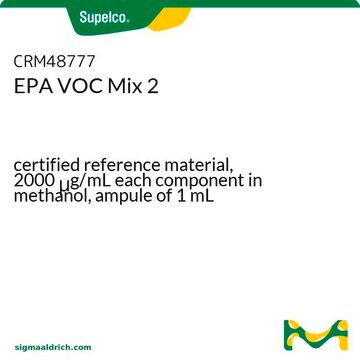56834
Immunoglobulin G from human serum
≥95% (GE)
Synonym(s):
Human IgG
Sign Into View Organizational & Contract Pricing
All Photos(1)
About This Item
Recommended Products
Quality Level
Assay
≥95% (GE)
form
fibers
technique(s)
radioimmunoassay: suitable
impurities
≤1.0% sodium
≤15% water
solubility
0.1 M NaCl: 10 mg/mL, clear to slightly turbid, colorless
storage temp.
2-8°C
General description
Immunoglobulin G (IgG) subtype is the most abundant serum immunoglobulins of the immune system. It is secreted by B cells and is found in blood and extracellular fluids. IgG provides protection from infections caused by bacteria, fungi and viruses. Maternal IgG is transferred to fetus through the placenta that is vital for immune defence of the neonate against infections
Human IgG is purified from normal human serum and contains =1.0% sodium and =15% water.
Human IgG is purified from normal human serum and contains =1.0% sodium and =15% water.
Application
Immunoglobulin G from human serum may be used as a standard in solid-phase RIA, and to ensure precipitation in RIA for acetylcholine receptor and anti-acetylcholine receptor antibody. It may be used in preparation of soluble antigen containing tyrosine residues for iodination.
Other Notes
Review
Disclaimer
Unless otherwise stated in our catalog or other company documentation accompanying the product(s), our products are intended for research use only and are not to be used for any other purpose, which includes but is not limited to, unauthorized commercial uses, in vitro diagnostic uses, ex vivo or in vivo therapeutic uses or any type of consumption or application to humans or animals.
Storage Class Code
11 - Combustible Solids
WGK
WGK 3
Flash Point(F)
Not applicable
Flash Point(C)
Not applicable
Choose from one of the most recent versions:
Already Own This Product?
Find documentation for the products that you have recently purchased in the Document Library.
Customers Also Viewed
Xuanmao Jiao et al.
Breast cancer research : BCR, 23(1), 11-11 (2021-01-25)
Triple-negative breast cancer (BCa) (TNBC) is a deadly form of human BCa with limited treatment options and poor prognosis. In our prior analysis of over 2200 breast cancer samples, the G protein-coupled receptor CCR5 was expressed in > 95% of TNBC
Production and assay of antibodies to acetylcholine receptors.
J Lindstrom et al.
Methods in enzymology, 74 Pt C, 432-460 (1981-01-01)
Kang R Cho et al.
Journal of the American Chemical Society, 133(22), 8586-8593 (2011-05-04)
Aberrant protein aggregation causes numerous neurological diseases including Creutzfeldt-Jakob disease (CJD), but the aggregation mechanisms remain poorly understood. Here, we report AFM results on the formation pathways of β-oligomers and nonfibrillar aggregates from wild-type full-length recombinant human prion protein (WT)
Laura R Stingaciu et al.
Scientific reports, 6, 22148-22148 (2016-03-30)
A flexible linker region between three fragments allows antibodies to adjust their binding sites to an antigen or receptor. Using Neutron Spin Echo Spectroscopy we observed fragment motion on a timescale of 7 ns with motional amplitudes of about 1
V Cabiaux et al.
Biophysical journal, 73(1), 406-417 (1997-07-01)
Aquaporins are integral membrane proteins found in diverse animal and plant tissues that mediate the permeability of plasma membranes to water molecules. Projection maps of two-dimensional crystals of aquaporin-1 (AQP1) reconstituted in lipid membranes suggested the presence of six to
Protocols
HPLC Analysis of Immunoglobulin G (IgG) on Zenix® SEC-150 versus Zenix® SEC-300, Effect of Pore Size on Resolution
Our team of scientists has experience in all areas of research including Life Science, Material Science, Chemical Synthesis, Chromatography, Analytical and many others.
Contact Technical Service











